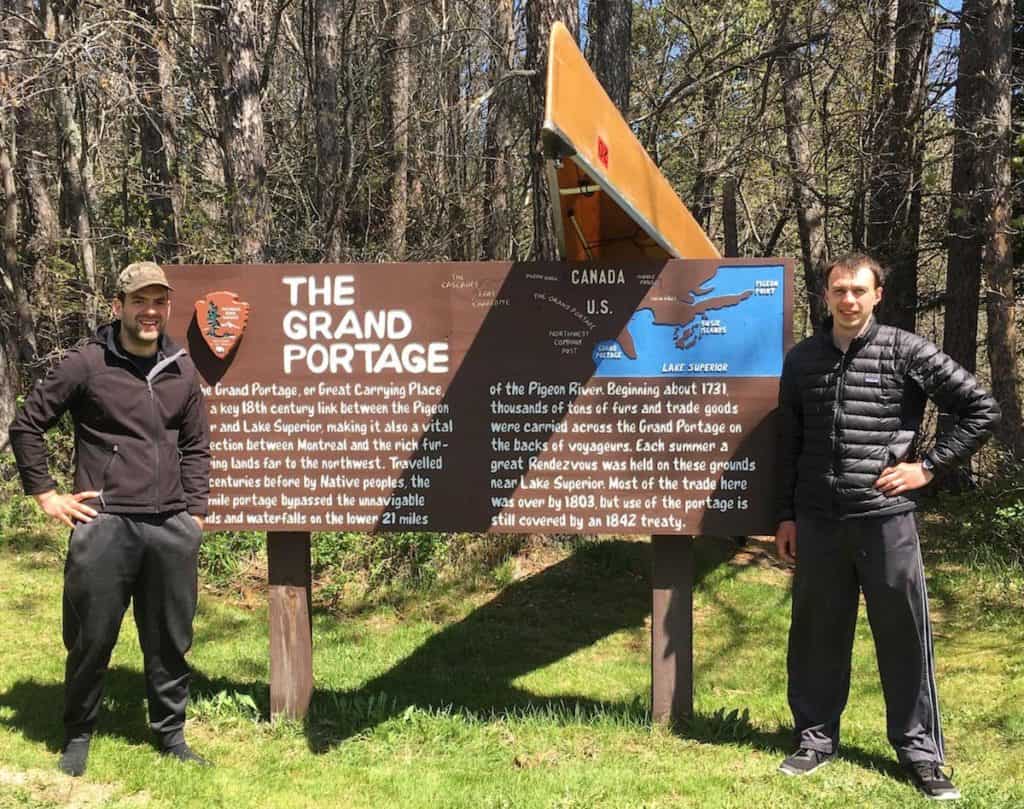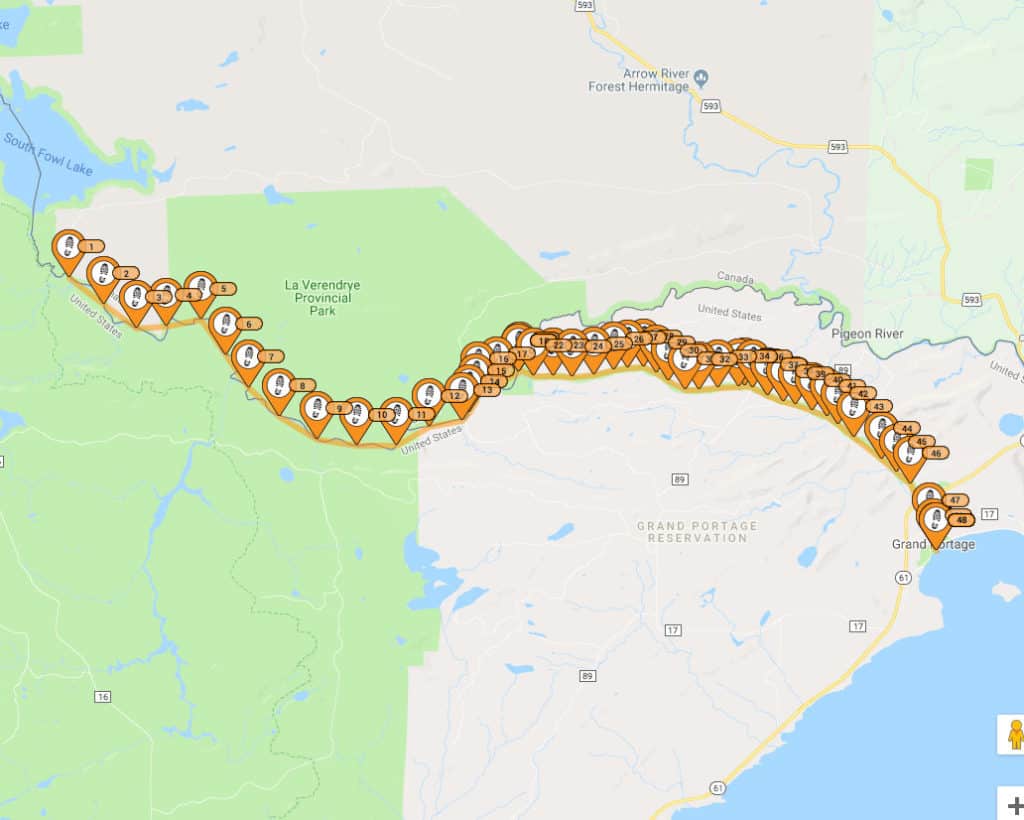A pair of paddlers have set a new record for canoeing the Border Route from Rainy Lake to Lake Superior. Over Memorial Day weekend, Matthew Peterson and Peter Wagner finished the more than 200-mile route in 69 hours and 25 minutes.
Their accomplishment shaved 10 hours off the previous record of 80 hours, 40 minutes, set in 1968 by Verlen Kruger and Clint Waddell.
Following the same route as Kruger and Waddell, who the modern record-setters speak of reverently, they started at Sha-Sha Resort on Rainy Lake, at the east “end of the road,” the farthest point possible for vehicle access.
Following the lakes and rivers that lie on the U.S.-Canada border, Wagner and Peterson crossed Voyageurs National Park and the Boundary Waters. they also took the same shortcut as Kruger and Waddell, over the Dawson Portage through Canada, to bypass the longer Loon River.
There has been renewed interest in the route and the record since paddlers started organizing informal attempts in 2015. In 2017, International Falls paddler or challenge organizer Bob ‘Beav’ Bulhaver set a new solo record of 91 hours.
The partners spoke to WTIP News in Grand Marais the day after breaking the record.
Successful strategy
They said that like Kruger and Waddell, they used only a map and compass for navigation, leaving a GPS turned off that they brought along for emergencies. Both paddlers said getting lost was a real risk to breaking the record.
Wagner, in the stern, was in charge of finding the route. Bow paddler Peterson highlighted Crooked Lake as particularly difficult to navigate.
“A wrong turn could put you hours off course, but Peter managed to do it in the dark with no moon, map and compass guided us through,” Peterson said.
Both paddlers said the most important part of their strategy was to get a strong start on the first day.
“We were just going to get worse and worse as time went on, so we started out at top speed and made as much progress as possible the first day,” Wagner said.
With help from a tailwind, they covered 100 miles in the first 24 hours. They also crossed a couple large east-west oriented lakes, including Saganaga and Gunflint, at night, to avoid headwinds that blew during the day.
Nonstop paddling and portaging
The pair did not take a break from traveling at all in the nearly three days the trip took. They took bathroom breaks and occasionally ate a little food at portages. Each one took steps to mitigate their own weak spots: because Wagner is slight in build, getting cold was his biggest concern. The heavier Peterson needed to make sure he ate enough. Using flameless heat packs, they warmed up pre-cooked rice packets for a hot meals.
After paddling and portaging for two days straight, the final leg of the trip presented its own unique challenge. The eight-mile Grand Portage was still covered in blown down trees from the winter, requiring Wagner and Peterson to crawl over them.
Eventually, they carried the canoe to the gates of the Grand Portage, meeting supporters, and dipped it in the waters of Lake Superior. Then they caught up on sleep.



